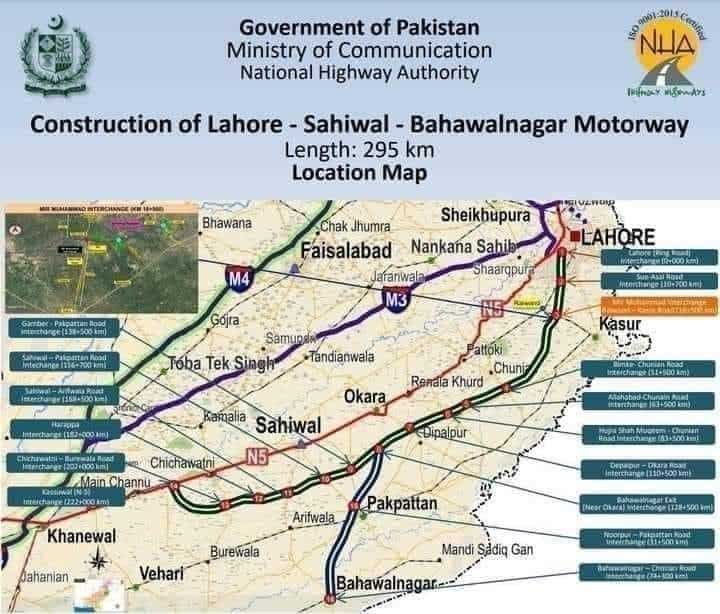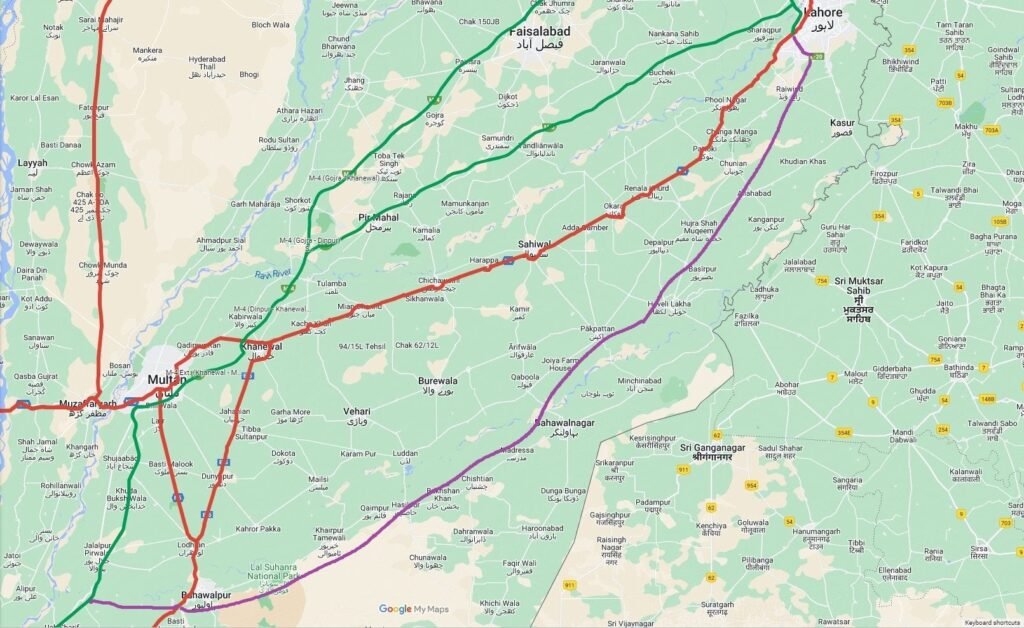Lahore Sahiwal Bahawalnagar Motorway: Route, Benefits, and Land Acquisition Insights

Lahore Sahiwal Bahawalnagar Motorway: Route, Benefits, and Land Acquisition Insights
The Lahore–Sahiwal–Bahawalnagar Motorway, a transformative infrastructure project in Punjab, Pakistan, aims to enhance regional connectivity and drive economic growth. Spanning 295 km, this motorway will link Lahore to Bahawalnagar via Sahiwal, passing through key districts like Kasur, Okara, and Pakpattan . Below is a detailed breakdown of its route, economic benefits, and insights into land acquisition processes.
Route Overview and Key Features
The motorway begins at Lahore Ring Road (Haloki Interchange) and extends southeast toward Bahawalnagar. The route is divided into two segments:
- Lahore to Sahiwal (6 lanes): Passes through agricultural hubs like Depalpur Chowk (Okara) and historic sites such as Harappa, connecting towns like Bhimke, Noorpur, and Adda Gamber.
- Sahiwal to Bahawalnagar (4 lanes): Extends southward through Chichawatni and Arifwala, terminating near the Bahawalnagar-Chistian Road Interchange.
Major interchanges include Pakpattan Road (Interchange No. 9) and Noorpur (Interchange No. 15), designed to streamline traffic and improve access to rural areas .

Economic and Social Benefits
- Boost to Trade and Agriculture:
The motorway will facilitate faster transportation of goods, linking Punjab’s agricultural heartland (Okara, Sahiwal) to urban markets like Lahore. This is expected to reduce post-harvest losses and increase farmers’ income . - Job Creation:
Construction phases alone are projected to generate thousands of jobs, while long-term benefits include opportunities in logistics, retail, and tourism along the corridor . - Reduced Travel Time:
The route will cut travel time between Lahore and Bahawalnagar by up to 40%, with estimated savings of 2–3 hours for freight and passenger vehicles . - Safety Improvements:
Modern design features, including dedicated lanes and reduced circuitous routes, are expected to lower accident rates by 20–30% in high-risk zones .
Land Acquisition and Compensation Rates
The government has allocated Rs 436 billion for the project, with a significant portion dedicated to land acquisition . While exact compensation rates vary by district, the process follows these guidelines:
- Market-Based Valuation: Land prices are determined by district authorities using Mauza-wise valuation tables, ensuring transparency and alignment with local real estate trends .
- Compensation for Displaced Communities: Farmers and landowners receive compensation at rates 15–20% above market value in rural areas to account for agricultural productivity losses .
- Urban Land Premium: In cities like Lahore and Okara, compensation includes additional premiums for commercial potential, reflecting higher land values .
Challenges and Criticisms
- Cost-Benefit Debate:
Critics argue that road expansions often fail to deliver proportional economic returns, citing studies where costs outweighed benefits by 17% when factoring in land value and environmental impacts . However, proponents highlight the motorway’s role in reducing rural-urban disparities . - Environmental Concerns:
The project’s land use (spanning 1,200+ hectares) raises questions about deforestation and loss of arable land. Mitigation measures include tree replanting and eco-friendly drainage systems .
For detailed maps or compensation queries, visit the National Highway Authority (NHA) website or refer to district land records . This motorway is set to redefine Punjab’s economic landscape, bridging gaps between cities and villages while fostering sustainable development. 🚚🌾